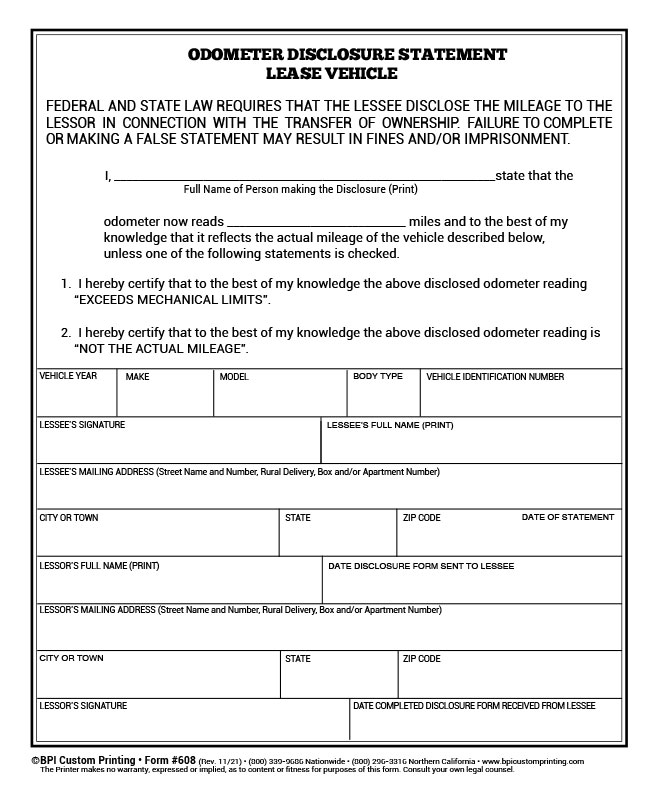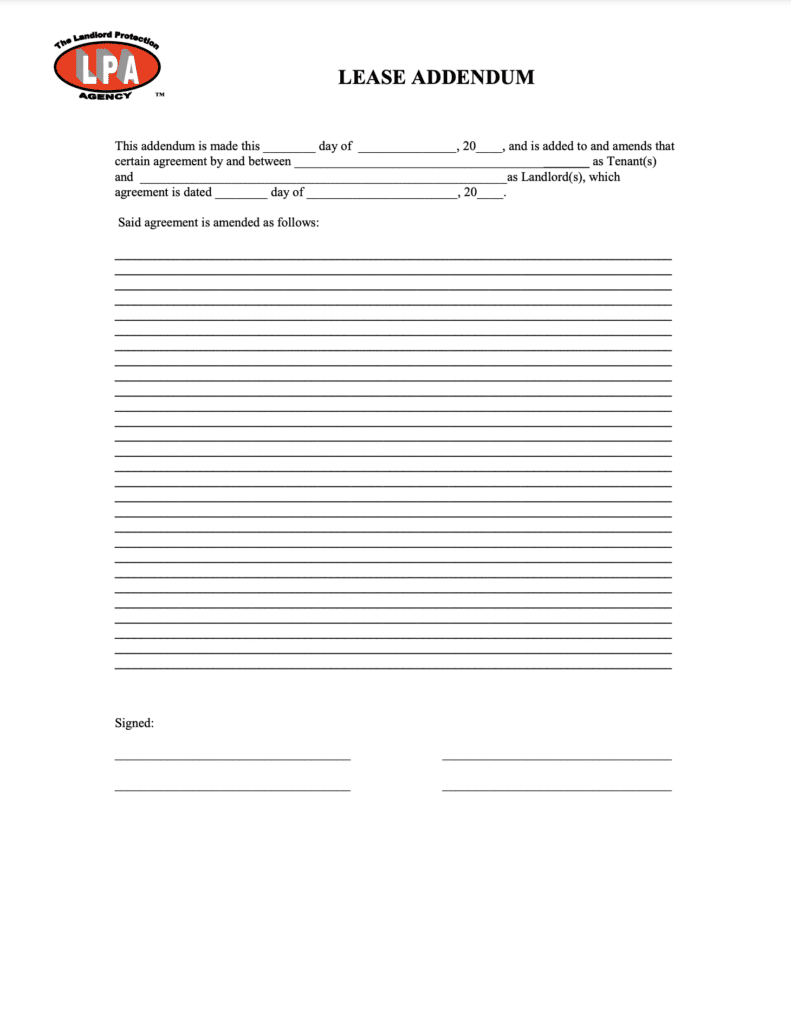Pet policies
Enhancing Leases: The Power of Effective Addendums

Enhancing Leases: The Power of Effective Addendums
Lease agreements are foundational documents that govern the tenant-landlord relationship. While standard lease terms cover essential aspects, lease addendums play a crucial role in tailoring agreements to specific needs, addressing contingencies, and providing additional clarity.
Defining Lease Addendums
Lease addendums are supplemental documents that modify or add to the terms of an existing lease agreement. They serve as legal and binding components that both parties—tenants and landlords—agree upon to address specific situations or requirements not covered comprehensively in the original lease.
Customizing Lease Terms for Specific Needs
One primary advantage of lease addendums is their ability to customize lease terms for specific needs. Whether it’s a unique provision related to property use, pet policies, or other specific arrangements, addendums allow landlords and tenants to tailor the lease to their particular requirements.
Addressing Pet Policies and Accommodations
Pet policies are common subjects addressed through lease addendums. Landlords may use addendums to specify rules regarding pet types, sizes, and any associated fees. Likewise, tenants with service animals may include addendums to ensure proper accommodations are documented within the lease agreement.
Catering to Property Modifications
Lease addendums are valuable when tenants seek approval for property modifications beyond routine maintenance. Whether it’s installing additional fixtures or making structural changes, a well-crafted addendum ensures both parties are on the same page regarding alterations and responsibilities.
Handling Rent Adjustments and Renewals
Rent adjustments and lease renewals often involve detailed terms and conditions. Instead of creating an entirely new lease, addendums can efficiently address changes in rental amounts, renewal terms, and any associated modifications while keeping the core lease intact.
Addressing Lease Termination Conditions
Lease termination conditions may vary based on unforeseen circumstances or specific arrangements between landlords and tenants. Addendums are instrumental in outlining the terms and procedures for early termination, providing clarity and mitigating potential disputes.
Ensuring Legal Compliance and Clarity
Lease addendums contribute to legal compliance by clearly articulating any additional terms in a way that aligns with existing lease agreements. This clarity minimizes the risk of misunderstandings and provides a solid legal foundation for both parties.
Navigating Shared Spaces and Responsibilities
In situations where common areas or shared spaces are part of the leased property, addendums can outline responsibilities and expectations. This is particularly relevant in multi-unit buildings or shared living arrangements where clear guidelines contribute to harmonious cohabitation.
Transparent Communication and Agreement
Transparent communication is vital in lease agreements. Addendums foster a transparent process where both parties have the opportunity to discuss and agree upon additional terms. This collaborative approach strengthens the tenant-landlord relationship and minimizes misunderstandings.
Documenting Changes for Future Reference
Lease addendums serve as documented evidence of any changes or additional agreements made during the lease term. This documentation is valuable for both parties, offering a reference point in case of disputes and ensuring a comprehensive record of the evolving lease terms.
Exploring Additional Resources for Lease Addendums
For a deeper understanding of lease addendums and how they can enhance lease agreements, consider
Transparent Tenancies: Mastering Lease Disclosures for Informed Renting

Navigating Transparency: The Art of Lease Disclosures
Lease disclosures are a fundamental aspect of the renting process, providing crucial information to tenants and promoting transparency between landlords and renters. In this article, we explore the significance of lease disclosures, what information they typically include, and why they are essential for both landlords and tenants in fostering a fair and informed renting experience.
The Purpose of Lease Disclosures: Building Trust and Transparency
Lease disclosures serve as a mechanism for building trust and transparency in the landlord-tenant relationship. By openly sharing important information about the property, its conditions, and specific terms of the lease, landlords demonstrate a commitment to ensuring that tenants have a clear understanding of what they can expect during their tenancy.
Required Disclosures: Legal Obligations for Landlords
Landlords have legal obligations to provide certain disclosures to tenants as mandated by local, state, and federal laws. These disclosures vary, but common elements include information about lead-based paint hazards, the presence of asbestos, and details about the security deposit. Ensuring compliance with these legal requirements protects both parties and helps prevent legal issues down the line.
Lead-Based Paint Disclosures: Protecting Tenant Health
Lead-based paint disclosures are critical, especially in older properties constructed before the banning of lead-based paint in residential properties. Landlords must inform tenants about the potential presence of lead-based paint and provide them with relevant information and resources. This disclosure aims to protect tenant health, especially in properties where lead exposure may pose a risk.
Asbestos Disclosures: Addressing Health and Safety Concerns
In properties built before certain years, asbestos may be present in building materials. Lease disclosures regarding asbestos inform tenants about the potential presence of this material and any associated health risks. While not every older property contains asbestos, it’s crucial to disclose its possible existence to ensure tenant awareness and safety.
Security Deposit Disclosures: Clarifying Financial Expectations
Clear and detailed disclosures about security deposits are essential for setting expectations regarding tenant finances. Disclosures typically include information about the amount of the security deposit, the conditions under which deductions may be made, and the timeline for returning the deposit after the lease ends. Providing this information helps avoid disputes and fosters a transparent financial arrangement.
Rent Control Disclosures: Complying with Local Regulations
In areas with rent control regulations, landlords must provide tenants with relevant disclosures outlining their rights and protections under local rent control ordinances. These disclosures help tenants understand the rules governing rent increases, eviction protections, and other regulations that may impact their tenancy.
Utilities and Services Disclosures: Clarity in Responsibilities
Lease disclosures should clearly outline which utilities and services are included in the rent and which are the responsibility of the tenant. This transparency helps tenants budget effectively and avoid misunderstandings about their financial responsibilities related to the property.
Property Condition Disclosures: Setting Realistic Expectations
Informing tenants about the current condition of the property is crucial for setting realistic expectations. Disclosures regarding any known issues or defects in the property ensure that tenants are aware of
Lease Addendums: Enhancing Clarity in Rental Agreements

Navigating Lease Addendums: Enhancing Rental Agreement Clarity
Lease addendums serve as valuable tools within the realm of rental agreements, providing a mechanism to modify or add specific terms to an existing lease. Understanding the purpose, application, and best practices associated with lease addendums is crucial for both landlords and tenants to ensure a transparent and mutually beneficial rental arrangement.
Defining Lease Addendums: Tailoring Agreements to Specifics
A lease addendum is a supplemental document attached to the original lease agreement, outlining additional terms, conditions, or modifications. This flexibility allows landlords and tenants to address specific circumstances or needs that may arise during the course of the lease. Addendums can cover a wide range of topics, from pet policies to alterations or any other specific arrangements beyond the standard lease terms.
Common Types of Lease Addendums: Addressing Diverse Needs
Lease addendums come in various forms, each designed to address specific aspects of the rental arrangement. Pet addendums, for example, outline rules and responsibilities related to tenants with pets. Other common addendums include those covering alterations or improvements to the property, utility agreements, and clauses related to property maintenance. The versatility of addendums makes them adaptable to the diverse needs of both landlords and tenants.
Pet Addendums: Fostering Pet-Friendly Living
One of the most prevalent types of lease addendums is the pet addendum. This document sets forth the conditions under which tenants are allowed to have pets on the property. It may include details such as pet deposits, weight restrictions, and any specific rules related to pet care and behavior. A clear and comprehensive pet addendum contributes to a harmonious living environment for both tenants and landlords.
Alteration Addendums: Seeking Permission for Changes
Tenants desiring to make alterations or improvements to the property may need an alteration addendum. This document outlines the specific changes permitted, the approval process, and any restoration requirements at the end of the lease term. Landlords can use this addendum to maintain control over property modifications while accommodating tenant needs within reasonable boundaries.
Utility Addendums: Clarifying Responsibility for Utilities
Utility addendums clarify the responsibilities of both tenants and landlords regarding utility payments. This may include details about which utilities are included in the rent and which are the tenant’s responsibility. Clearly outlining these arrangements in a utility addendum prevents misunderstandings and ensures that each party knows their obligations concerning utility payments.
Maintenance Addendums: Setting Clear Responsibilities
Maintenance addendums detail the responsibilities of both parties regarding property upkeep. This may include specifics on routine maintenance tasks, such as lawn care or seasonal checks on heating and cooling systems. A well-crafted maintenance addendum promotes a proactive approach to property care, contributing to a well-maintained and comfortable living environment.
Rent Increase Addendums: Transparent Communication
In situations where a rent increase is deemed necessary, a rent increase addendum provides a transparent and documented way to communicate this change to tenants. It outlines the new rental amount, the effective date of the increase, and any other relevant details. Transparent communication through a rent increase
Renting with Pets: Navigating Pet-Friendly Housing Options

The Pet-Friendly Dilemma: Finding the Perfect Rental
Renting with pets presents a unique set of challenges and considerations for pet owners. From navigating restrictive policies to securing a pet-friendly environment, the journey of finding the perfect rental can be both exciting and daunting.
Understanding Pet Policies and Restrictions
Before diving into the rental search, it’s crucial to understand the pet policies and restrictions imposed by landlords or property management companies. Some rentals may have breed restrictions, weight limits, or specific requirements for pets. By knowing these details in advance, pet owners can narrow down their options and focus on properties that align with their furry friends.
Searching for Pet-Friendly Rentals
With the rise in pet ownership, the demand for pet-friendly rentals has increased. Many online platforms now allow users to filter their searches based on pet-friendly criteria. Utilizing these tools can save time and energy, ensuring that pet owners concentrate on properties where their pets are welcomed.
Highlighting Pet References in Rental Applications
When submitting rental applications, it’s beneficial for pet owners to include references for their pets. These references can come from previous landlords, neighbors, or professionals who have interacted with the pet. Providing evidence of a well-behaved and responsibly cared-for pet can strengthen the application and increase the likelihood of securing the desired rental.
Negotiating Lease Terms for Pet Owners
Once a suitable rental is identified, it’s time to negotiate lease terms. This involves discussing pet-related clauses, such as pet deposits, additional fees, and any specific responsibilities outlined in the lease agreement. Negotiating these terms upfront helps avoid misunderstandings and ensures a clear understanding of the expectations for both parties.
Creating a Pet Resume
In competitive rental markets, standing out is essential. Pet owners can create a pet resume to showcase their furry companions in a positive light. This document can include the pet’s name, breed, vaccination history, and even a brief description of their temperament. A well-prepared pet resume can demonstrate responsibility and commitment to potential landlords.
Exploring Pet Amenities in Rental Communities
Some rental communities offer special amenities for pets, such as designated play areas, grooming stations, or even pet-friendly events. Exploring these options can enhance the living experience for both pets and their owners. Additionally, communities that prioritize pet well-being often foster a more inclusive and supportive environment for all residents.
Understanding Pet-Related Fees and Deposits
It’s essential for pet owners to be aware of any additional fees or deposits associated with renting with pets. These may include pet deposits, monthly pet rent, or cleaning fees. Being transparent about these costs and budgeting accordingly ensures financial preparedness throughout the leasing period.
Building a Positive Relationship with Neighbors
Living in close proximity to neighbors requires a considerate approach when sharing space with pets. Building positive relationships with neighbors involves addressing any concerns promptly, ensuring that pets do not cause disruptions, and being respectful of shared spaces. This proactive approach contributes to a harmonious living environment for everyone.
Ensuring Responsible Pet Ownership
Renting with pets comes with
